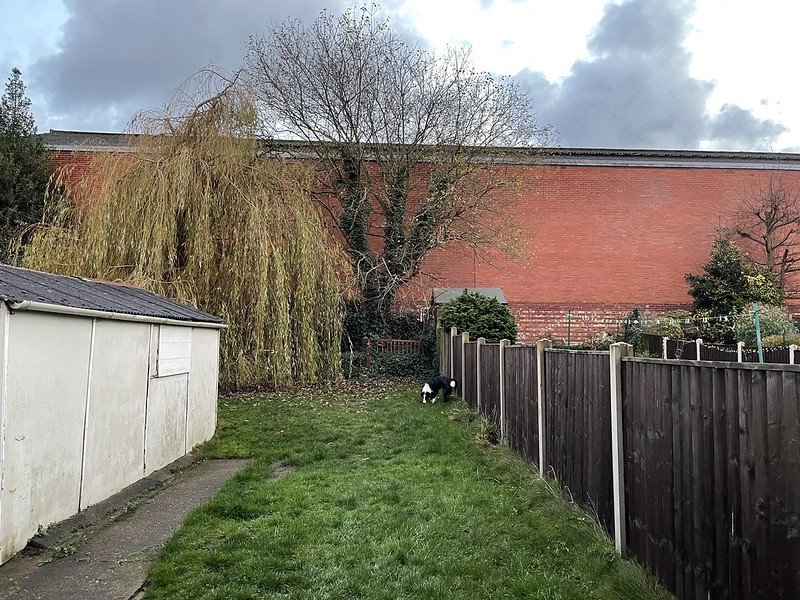Expert's Rating
Pros
- Stunning compact design
- Gorgeous OLED screen
- All core specs from regular 12
Cons
- Limited battery life
- Limited to 60Hz
- Slower MagSafe charging
Our Verdict
Small phone fans rejoice! The iPhone 12 mini is a pocket rocket with almost everything from the regular flagship inside a beautifully compact chassis.
Best Prices Today: iPhone 12 mini
As if 2020 wasn’t weird enough, Apple has launched a ‘mini’ version of its flagship when the likes of Sony and Samsung stopped doing that years ago. While most phones these days have displays close to a 7in tablet, the iPhone 12 mini coming in at 5.4in makes in one of the most interesting handsets of the year.
Along with a lack of small phone competition, the iPhone 12 mini is the cheapest option in Apple’s 2020 line-up. It looks great, has the highest pixel density of any iPhone in history, offers the same cameras as the main flagship and still gets MagSafe – with one small caveat.
Oh and look at this stunning blue colour! It’s the best small phone you can buy.
Design & Build
The design section of an iPhone review is normally pretty boring. You don’t really need me to tell you what a new model is like on the whole since iPhones typically look the same with a recent(ish) caveat being the overhauled iPhone X.
While the iPhone 12 range is sort of more of the same, it’s also not and the iPhone 12 mini is the standout device in this area.
Apple has done small phones before – starting with 3.5in on the first edition but I mean recent models like the SE – but the firm has never labelled a phone ‘mini’, a stamp reserved for the tiny iPad mini until now.
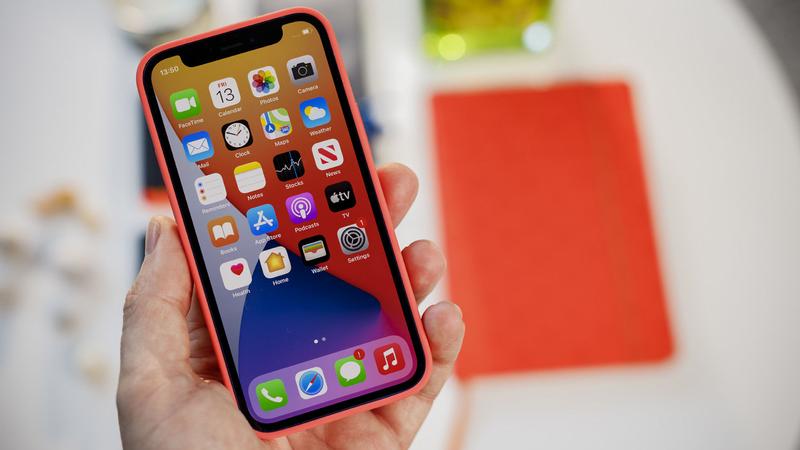
A 5.4in screen might not seem ‘mini’ compared to that original iPhone or even the classic 4.7in size of the latest iPhone SE, but that has Apple’s older design style including a Home button on the front and chunky bezels. In fact, it’s a bigger handset despite the much smaller display.
The iPhone 12 mini really is compact when you compare it to the 6.1in iPhone 12 and even more so against the whopping 6.7in Pro Max model.
It really is one of the smallest phones you can buy right now, beating the Pixel 4a and well that’s about the only other true compact phone out there really. Those wanting a phone you can easily hold and use with one hand will love it.
The size also means it’s light – just 133g – so you don’t get a fatigued little finger if, like me, that’s how you normally support the weight while holding it.
As well as making the phone incredibly teeny, Apple has also resurrected an older design style. So the iPhone 12 mini, like the other 12 models, is reminiscent of models like the iPhone 5S and first-generation iPhone SE.
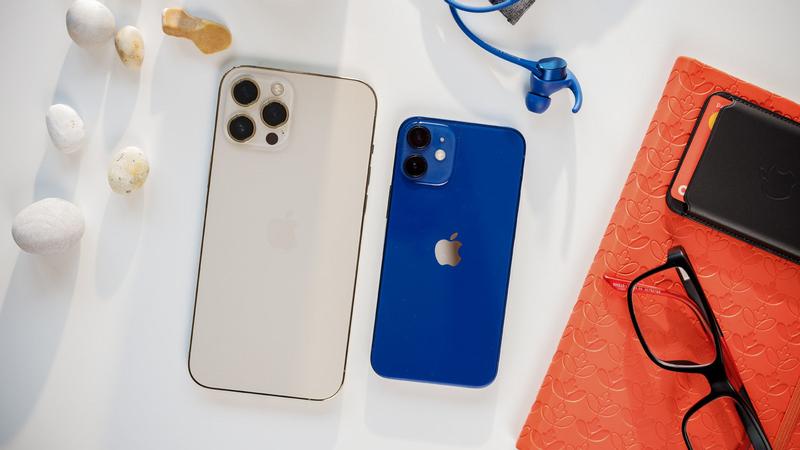
That is to say, it has flat sides rather than the rounded pebble-like shape we’ve been used to for many years. Apple hasn’t said exactly why it’s switched back to this style, but the iPhone 12 mini looks great as if the iPhone 5S was given a 2020 makeover.
Apple offers an IP68 waterproof rating and I haven’t dropped the iPhone mini 12 thank goodness, but there’s a Ceramic Shield at the front which aims to protect the display (four times better drop performance, according to Apple). The back is glass and the frame is aluminium if you’re wondering.
The iPhone 12 mini is available in a range of colours including Black, White, (Product)Red, Green and Blue. At its 2021 Spring Event where the firm also announced the new iMac M1, iPad Pro M1 and AirTags, it introduced a new purple colour.
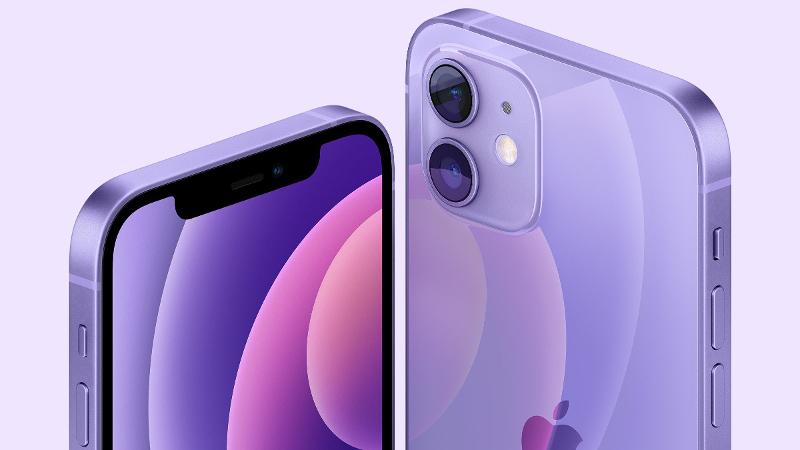
See the best cases for the iPhone 12 mini if you want added protection.
MagSafe
As well as new colours, including this absolutely stunning dark blue model I’ve tested, Apple has also resurrected something else: MagSafe. This used to be used for MacBook chargers so the cable attached to the laptop magnetically rather than pushing a male connector into a female port.
The clever system meant you could accidentally pull the cable out without the risk of damage, while also just making life easier but Apple eventually moved on.
Well, it’s back for the iPhone 12 range although not for the charging port at the bottom which is still Lightning. Here it’s being used for a number of different accessories including a wireless charger and cases.
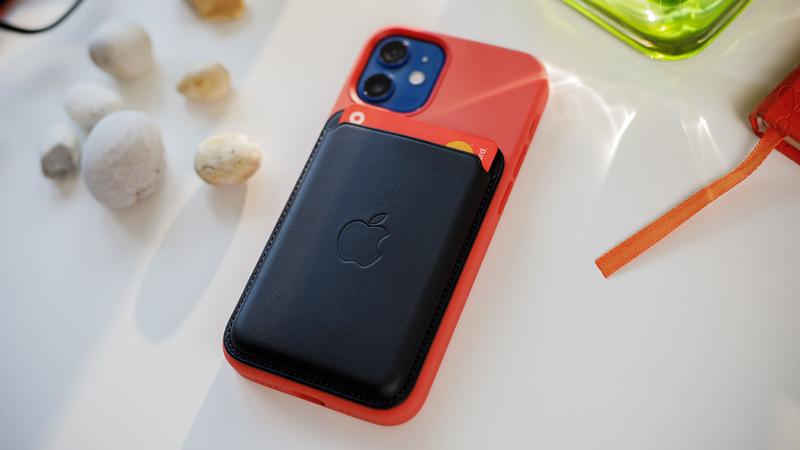
I’ve only tried the silicone case which doesn’t seem to really need the magnet but my colleague David Price, editor of Macworld UK, points out that the charger snapping into place thanks to the magnets means “You no longer have to worry about placing your phone on its charging pad in fractionally the wrong position,” and “you can continue to use your phone, reasonably conveniently, while it’s charging wirelessly”
Rest assured that MagSafe works through the official case and likely most third-party ones too and you can combine extras such as a wallet that snap on whether there’s a full case or not. Check out all the best MagSafe accessories for your iPhone 12.
There’s a downside to MagSafe on the iPhone 12 mini which I’ll address in the battery life section later.
Screen
Historically, mini versions of bigger phones have been given many downgrades compared to their bigger brothers. That’s not the Apple way of doing things so the iPhone mini 12 still has a Super Retina XDR display using OLED technology.
The resolution of 2340×1080 across the 5.4in size means this phone has the highest pixel density seen on an iPhone ever – a whopping 476ppi so there’s nothing but crispness here. It’s got all the bells and whistles: True Tone, HDR, Wide P3 colour, Haptic Touch and more.
The thing missing, if you’re in touch with the wider market, is a high refresh rate. Even 90Hz can be found on budget phones but Apple is sticking to the classic 60Hz for now. It’s a shame but not the end of the world.
It’s a stunning display then but it’s the size that’s important here. What it will be like depends on where you’re coming from when you consider this is only 0.1in smaller than the iPhone 8 Plus.
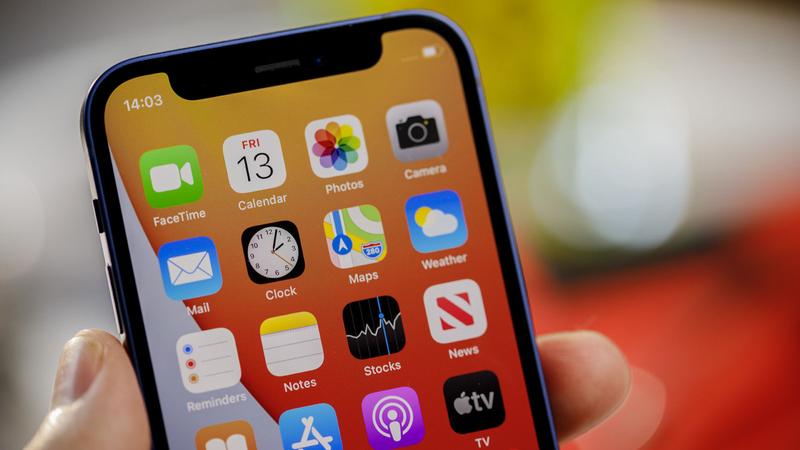
Those coming from an older phone with the Home button design are really going to notice a difference. Either, from the likes of the 8 Plus that the size is almost the same yet in a much smaller chassis or much bigger if you’re on a classic 4.7in iPhone.
You’ll have to get used to the lack of the Home button and therefore the switch to Face ID and gesture control, along with the notch at the top of the screen. You’ll get used to it all quicker than you think.
Anyone coming from a bigger phone – I moved from an iPhone X – will find it more cramped, especially for things like typing on the keyboard. But again, you get used to it and it’s a joyous phone to use one-handed.
It’s not ideal for things like watching video, of course, or playing games in a landscape orientation unless you have tiny hands. However, I was able to play a favourite of mine, Alto’s Odyssey, without too much trouble, it’s just a little more awkward to hold for that compared to the iPhone X.
My main point here is that you’ve got to want a small phone to buy the 12 mini and if you do, then boy does it do the job well. The iPhone 12 comes in at 6.1in so it’s quite a big difference if you’re wondering which to get.
Specs & Performance
I don’t want to bore you with too many specs here as this isn’t a particularly interesting area of the phone. However, it’s worth noting that like the display, the core components are not downgraded compared to the iPhone 12.
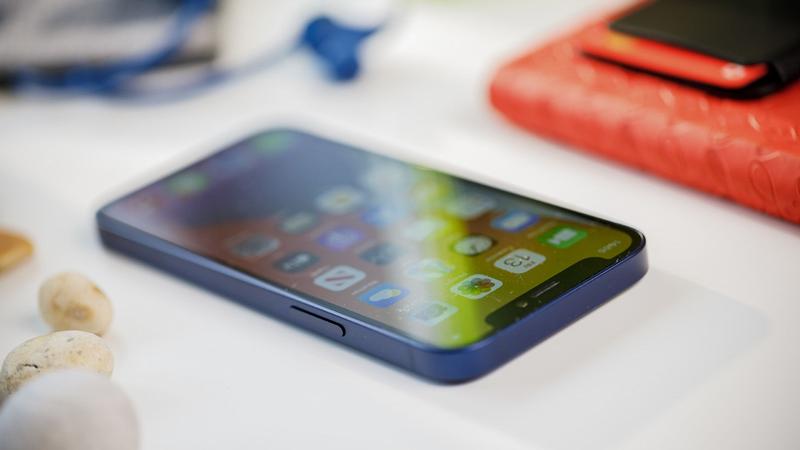
It’s doesn’t even have less RAM (4GB which jumps to 6GB on the Pro models) so the headline is the Apple A14 Bionic chip and a choice of 64-, 128- and 256GB of storage. As usual, choose wisely with no microSD card slot onboard.
There’s really little to say apart from the performance is silky smooth as you should expect from a flagship iPhone with Apple’s own silicon and software. I haven’t noticed the 12 mini struggle with anything in almost two weeks of use. Benchmark scores are below if you want to nerd out a bit.
The bigger news here is that the iPhone 12 mini supports 5G networks. Great news if you’re already on a 5G plan or will do with this phone.
Cameras
Apple really hasn’t skimped on the mini as the phone still has all the same cameras as the regular 12. In short, that means dual 12Mp cameras, a regular and an ultrawide. It’s the Pro models that have telephoto lenses.
Largely it’s the same as the iPhone 11 nit it’s quite normal to see smaller improvements in this department these days. Still, there are lots of nice specs here including optical image stabilisation (OIS), up to f/1.6 aperture, a new 7-element lens, Smart HDR 3 and Deep Fusion.
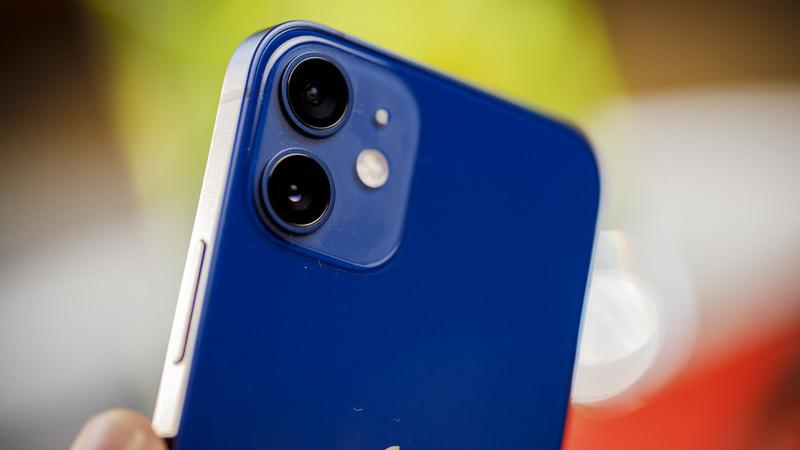
I’m personally not fussed about the lack of a telephoto here and would much rather have the ultrawide. Both cameras perform very well in a wide range of situations offering detailed, vibrant and lifelike images.
The hardware combined with those aforementioned software features make the phone an excellent point and shoot device. Lens correction on the ultrawide reduces the fish-eye distortion that’s common for this kind of lens.
Most impressive is the Night Mode which can capture an impressive amount of detail in near-total darkness. You can use it on either camera but you’re better off sticking to the main sensor. You will have to hold the phone very still for the long exposure though.
Some minor niggles include the way Portrait Mode is improved but can still struggle at times. There are certainly some better examples out there with the Pixel range coming to mind thanks to Google’s software. I also found the iPhone 12 mini a little tricky when it came to focusing at a macro level, taking a few attempts to get it right.
So quality, on the whole, is great (including video at up to 4K@60fps) but the camera app still bugs me somewhat. While it’s easy to switch between the core modes etc, there’s no settings menu to change video resolution or even switch on a grid. This all has to be done from the main phone settings menu and there’s not even a shortcut to that from the app.
Cameras at this end of the market should be amazing so it’s no surprise that Apple’s are. You won’t notice much difference coming from a recent iPhone but even compared to my iPhone X, the 12 mini is dramatically better.
Upgrading from an iPhone 8 or older? Prepare to be blown away.
Battery life
The iPhone 12 mini is small so that limits the size of battery Apple can fit inside. So, it’s no surprise that the firm quotes the shortest battery life of the 12 range at 15 hours video playback or 10 if you’re streaming said video.
However, you’ll only get an extra two hours from the iPhone 12 on the former stat, according to Apple.
In real-world testing, I found the iPhone 12 mini can get through a day without too much bother. However, that’s without hammering it with gaming and streaming Netflix etc. As I said earlier, this isn’t really the phone for you if you want to do that stuff all the time anyway.
As my colleague David said in his Macworld review “Our subjective experiences of the mini’s staying power were okay. Not amazing, not horrible, just okay.” and that’s something I can totally agree with.
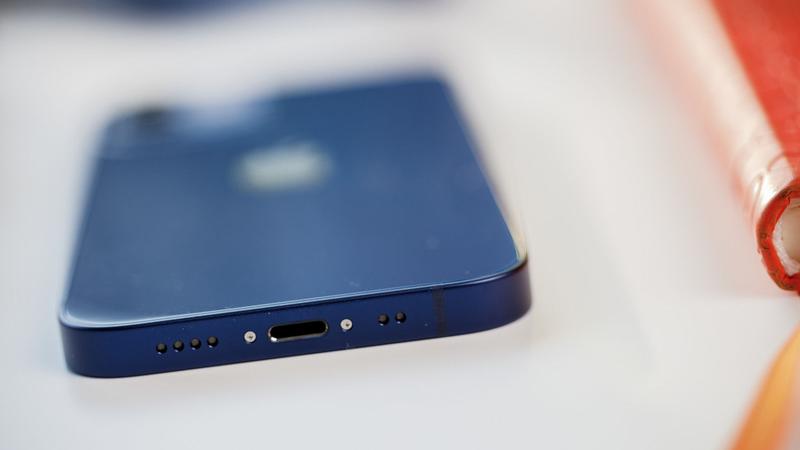
Getting through a day of reasonable usage is about what you have to expect here. A result of five hours and 42 minutes in the Geekbench 4 battery test is not very impressive.
It’s well worth noting that Apple no longer supplies iPhone with a charger so you only get a cable now. This is for a good environmental cause but the frankly stupid thing here is that the cable is USB-C so all those old iPhone chargers, or others, you have lying around are incompatible.
I mentioned earlier there was a downside to MagSafe on the 12 mini and that is a limit of 12W charging where the others can handle 15W. It’s not the biggest difference and Apple is still a long way behind Android in the fast charging space (regular Qi wireless charging is a paltry 7.5W here).
With the official £39 MagSafe charger, you can get the iPhone 12 mini from zero to 35% in a 30-minute time period. You’ll get faster charging with the cable if you buy the 20W power adapter for £19, hitting up to 50% in the same 30 minutes.
With no supplied brick, I plugged the USB-C cable into a 15W Pixel charger and managed to get to exactly 50% in 30 minutes. Check out our round up the best iPhone chargers for you, and also the best MagSafe Chargers.
Software
You probably don’t need me to talk about iOS much here but version 14 does bring some major changed worth briefly talking about.
Apart from being smooth and easy to use, Apple has added something that I’ve always wanted on an iPhone – widgets. As someone who uses two phones – one Android and one iPhone – it’s widgets that have been a major reason why I’ve typically preferred Android.
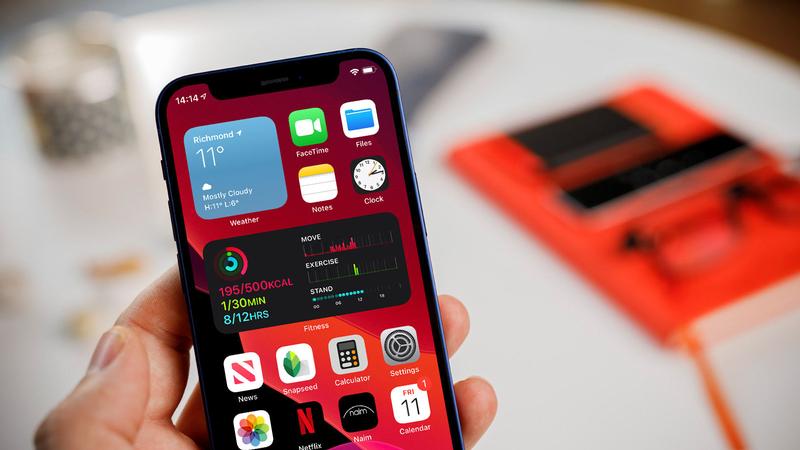
If this is news to you, they are essentially small apps that run on the home screen so you’re not limited to simple icons. They take up a varying amount of space and provide information without having to open said apps.
It’s brilliant and there are countless you can try out and place them around the home screen panels however you choose. I particularly like the ‘smart stacks’ one which has a number of different pages you can scroll through including weather, calendar, news and Music. Gone are the days of having to open multiple different apps to get things done.
Apple has also added the App Library as a way of viewing all your installed apps, so you’re not forced to have them on the home screen either lone or in folders. The App Library is found by swiping left and automatically groups apps into categories.
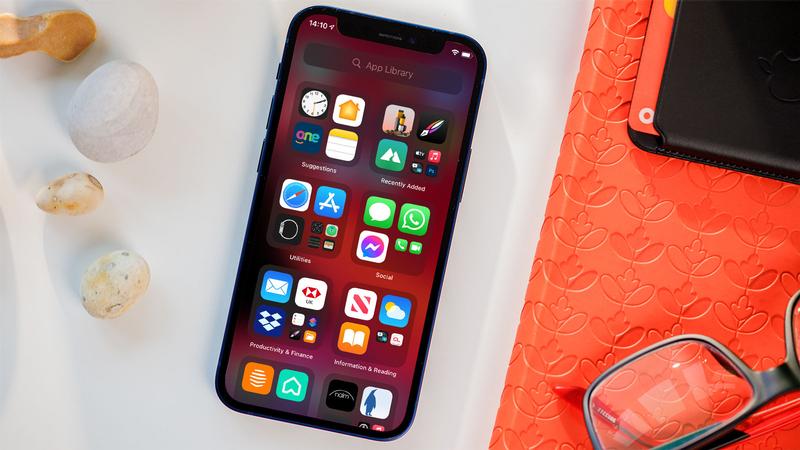
Price
As you might expect, the iPhone 12 mini is the cheapest of the 2020 range starting at £699/US$729. Things then jump £50/$50 for 128GB and another £100/$100 for 256GB. You can order it direct from Apple as well as the likes of Amazon, Carphone Warehouse, Currys PC World, John Lewis, Argos and Very.
It’s pretty good value in the iPhone world and even when compared to some Android phones, but that market has far better value when you consider the kind of specs you can get for half this price or even lower.
The main competition there is the Google Pixel 5, OnePlus 8T and Samsung Galaxy S20.
There are very few specifically small phones, though, with namely the Google Pixel 4a springing to mind and if budget isn’t a barrier then folding phones like the Motorola Razr 5G and Samsung Galaxy Z Flip are extremely compact.
If you’re only considering iPhones then the SE 2020 is the other obvious option for a small phone. It’s £399 and has a 4.7in screen.
Take a look at our guide to the best iPhone, and to see how it stacks up against Android competition, we’ve got the best smartphone.
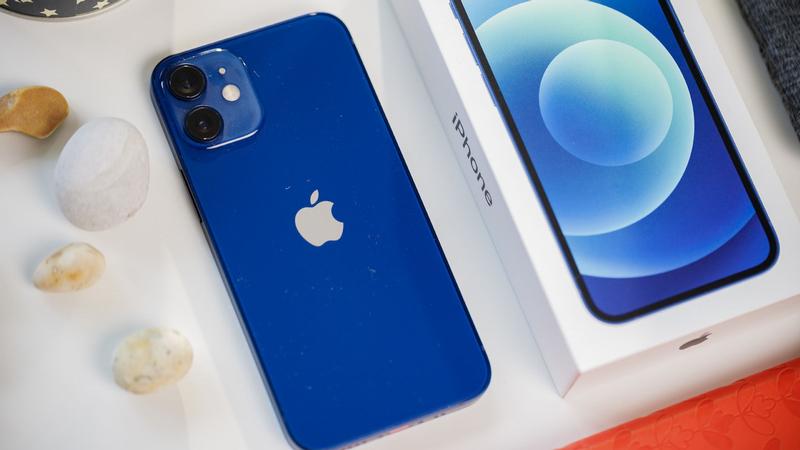
Verdict
There’s really very little (pun unintended) about the iPhone 12 mini that I dislike. In a world of typically huge smartphones that are hard to hold and use, it’s refreshing to see Apple offering something genuinely compact for those that still want it.
While the regular iPhone 12 is likely the best choice for most people, there will be many users out there who will delight in the tiny size of the mini.
And while this saves you money as the cheapest in the 12 range, there are almost no compromises because you still get the same display tech, processor, cameras and other specs like 5G support.
Minor downsides are the lack of a charger in the box (there’s just a cable now) and the MagSafe wireless charger is slightly slower on this phone compared to the others. Battery life is understandable shorter than other iPhone 12s but charging is quick enough to keep you topped up.
There are cheaper Android alternatives as usual – namely the Pixel 4a and Pixel 5 – but neither are as compact or as luxurious as the iPhone 12 mini.
If the price is affordable, this is the best small phone you can buy.



